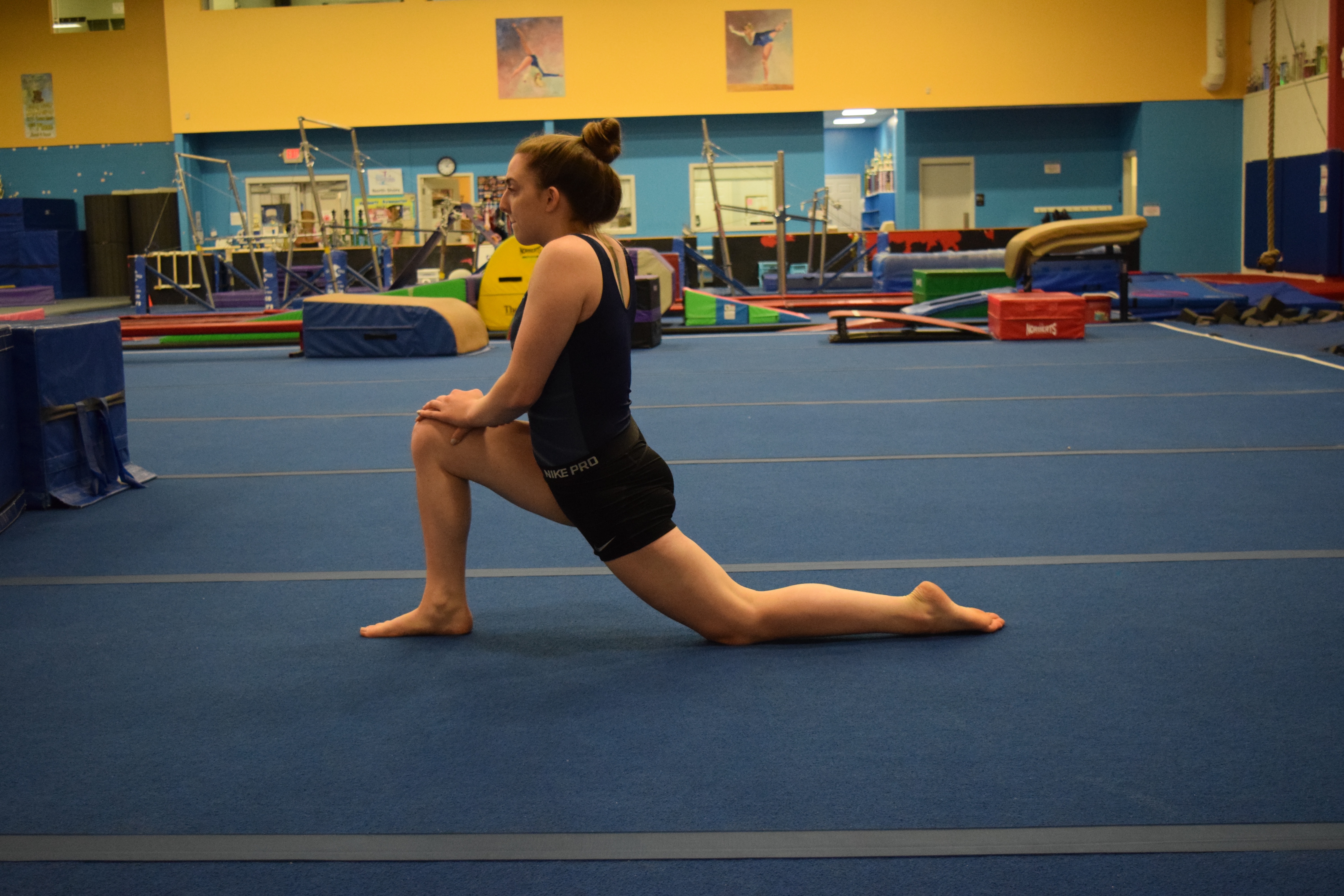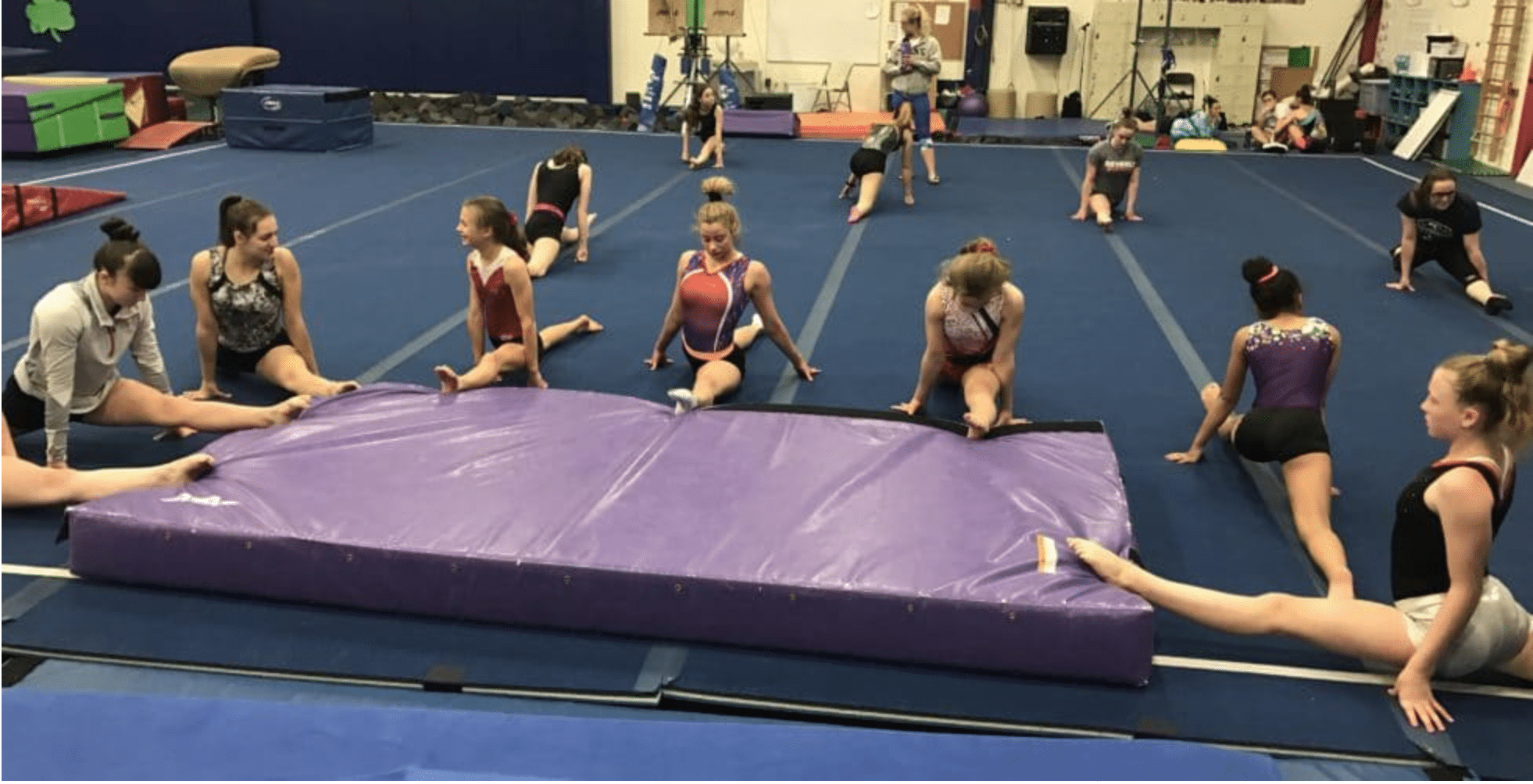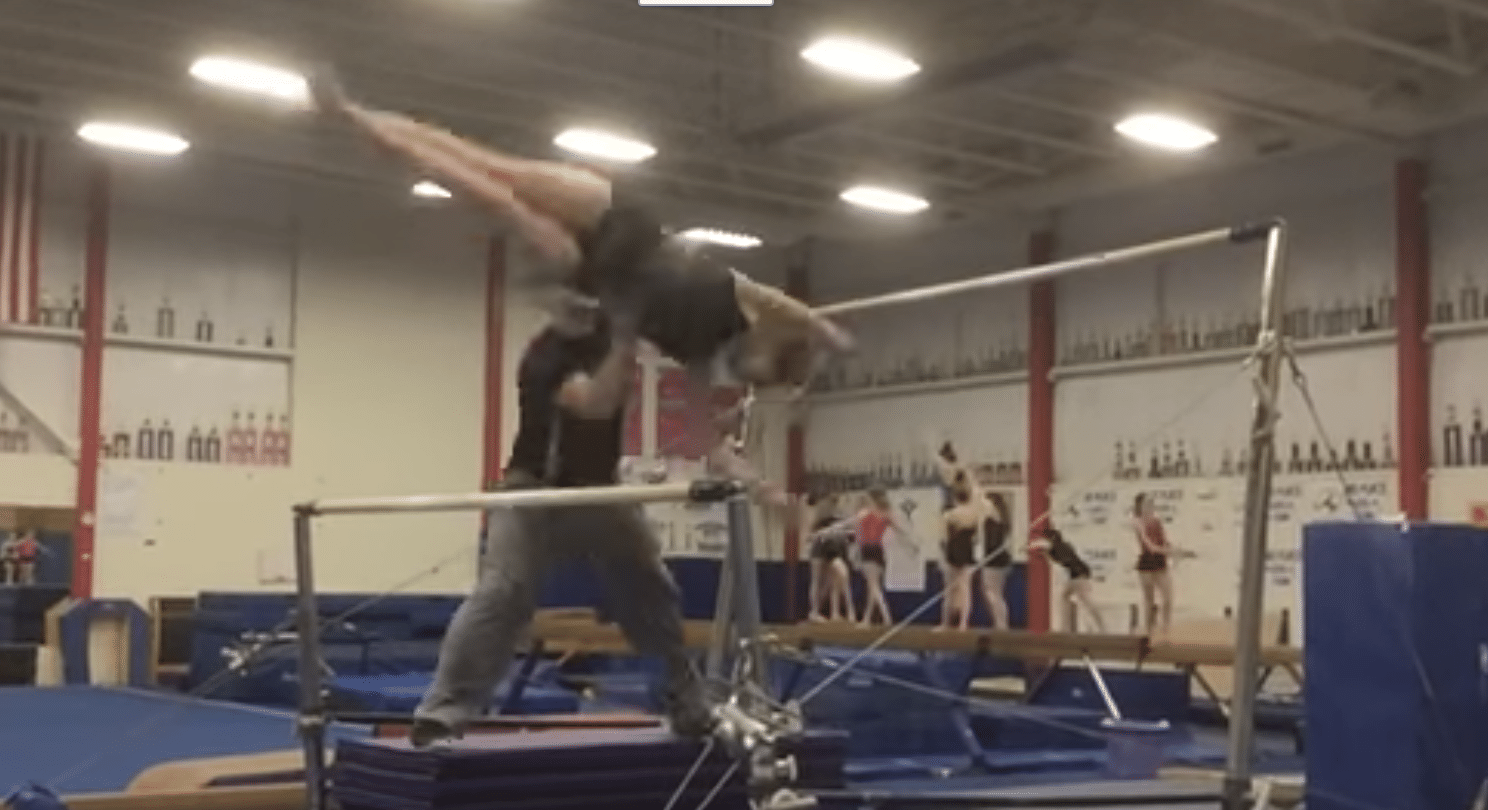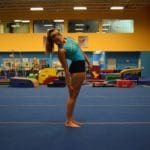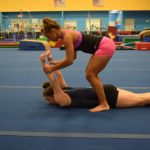Gymnastics, Please Stop Doing These Stretches (Part 1)
I try my best to not be on the offensive side of the coin when it comes to my writing. However, lately I have seen a ton of flexibility drills that I feel are not only dangerous, they likely are causing large performance drops in gymnasts. I want to be clear, this post series is NOT intended to be an “attack” directly to the coach or people across our sport. As I often say in lectures, as a coach used to make the exact same mistakes before I become more educated and read newer research.
Before talking more, remember if you want to learn exactly what hip flexibility drills and exercises I give to gymnasts, you can download my free PDF “10 Minute Gymnastics Flexibility Circuits” here,
Download My New Free
10 Minute Gymnastics Flexibility Circuits
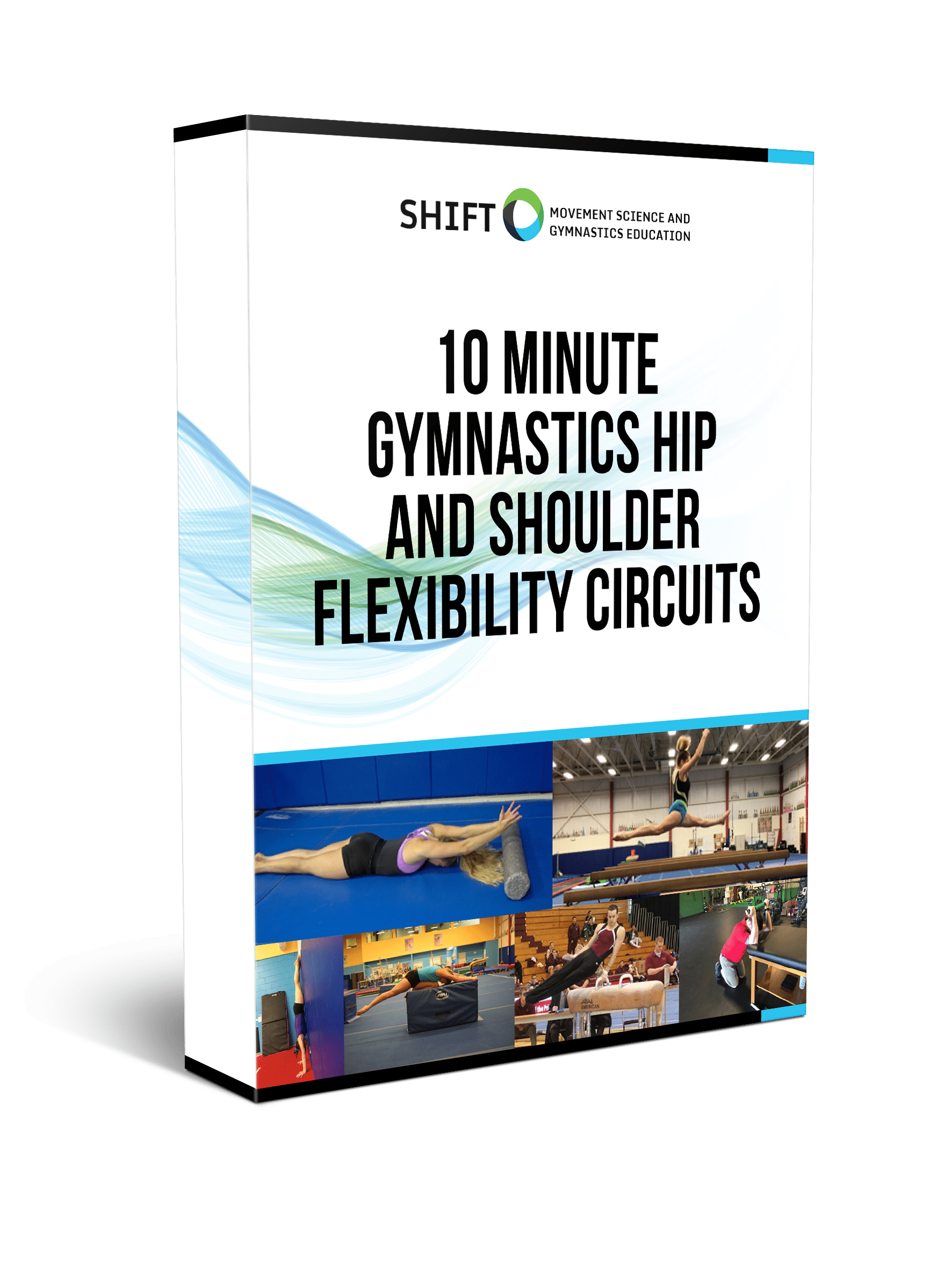
- 4 full hip and shoulder circuits in PDF
- Front splits, straddle splits, handstands and pommel horse/parallel bar flexibility
- Downloadable checklists to use at practice
- Exercise videos for every drill included
My only goals by writing this is coach/athlete/healthcare provider education, ultimately to helping gymnasts perform better, for longer, and with less injury. My concern is also with some of the overall flexibility principles currently in gymnastics. The first type of drill that I feel needs to stop is pushing the back legs of splits passively into hyperextension (seen below), especially with over extended lower backs, using gravity, the athlete’s body weight, a coach, or weights.
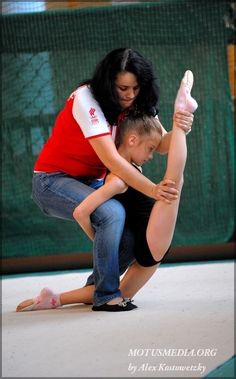
https://s-media-cache-ak0.pinimg.com/236x/71/e0/55/71e0554f00c29af79a7b39bd322f6f19.jpg
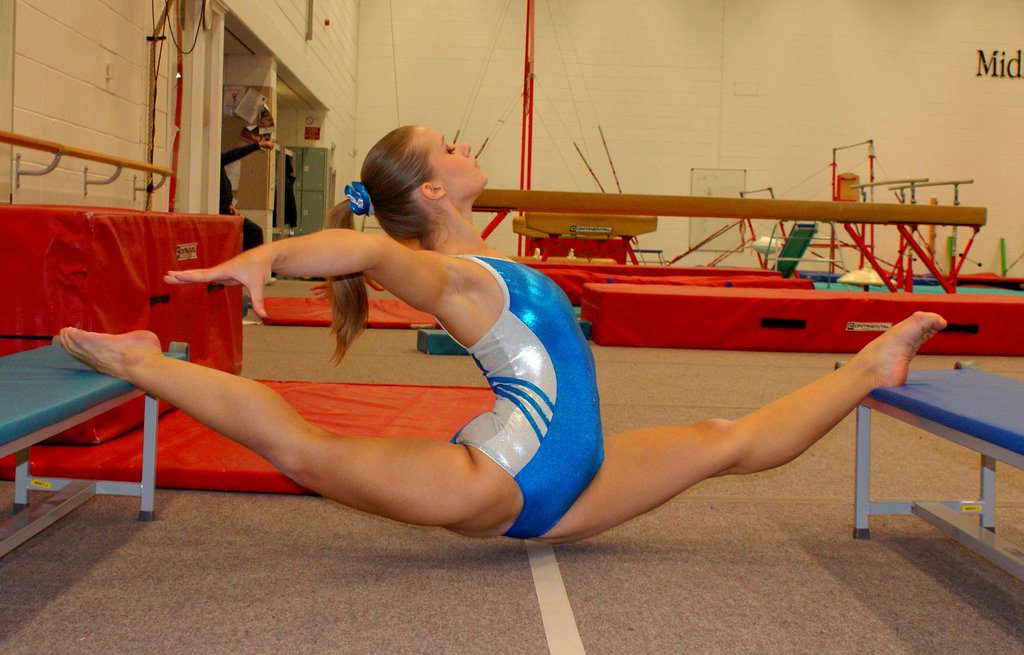
I will be the first person to admit as a coach I used to do things like in the pictures. As a healthcare provider who has spent quite a few hours digging in literature and treating gymnastics patients, I now cringe at these things. Let me first be very clear and say that I don’t think passive flexibility, splits, or other forms of stretching are inherently “bad for gymnasts”. However blindly applying flexibility drills without understanding of the anatomy or injury mechanisms, not giving individualized attention based off an assessment, letting an ego get in the way of becoming educated or referring someone out, or not adding full range strength/control after definitely are all problems.
Table of Contents
Why The Concern?
Let me explain my thoughts. There is much more than just hip flexors and quads in relation to structures that limit motion for the back leg of splits. The hip joint has two types of stabilizers to support it, static and dynamic stabilizers. Static stabilizers are more passive things out of the athlete’s control like inherent boney congruency or shape, ligaments/capsular tissue, and something known as the the labrum.
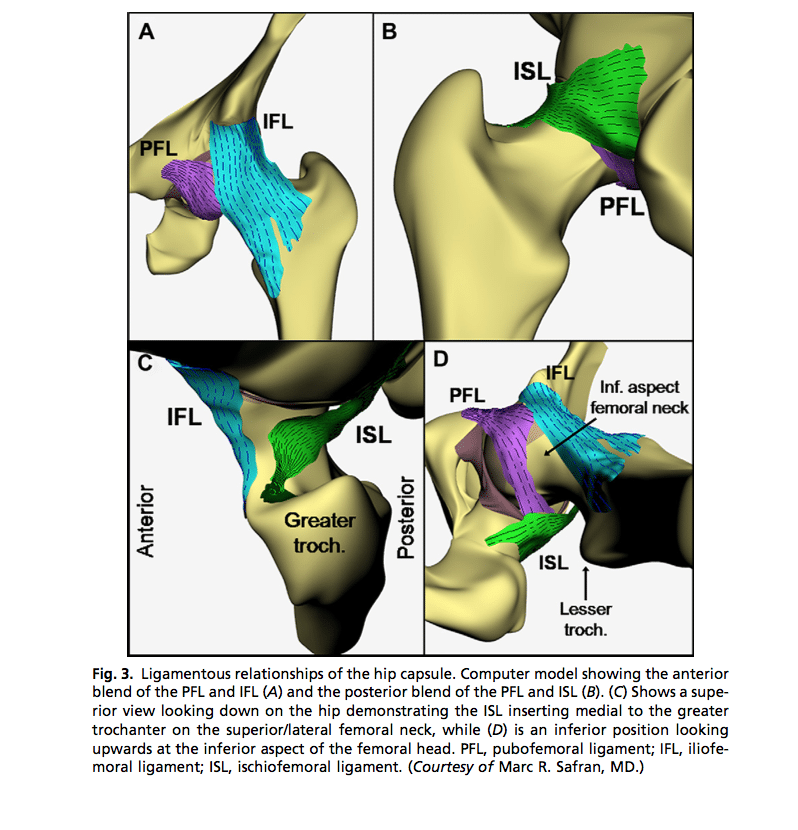
(Credit Safran 2015)

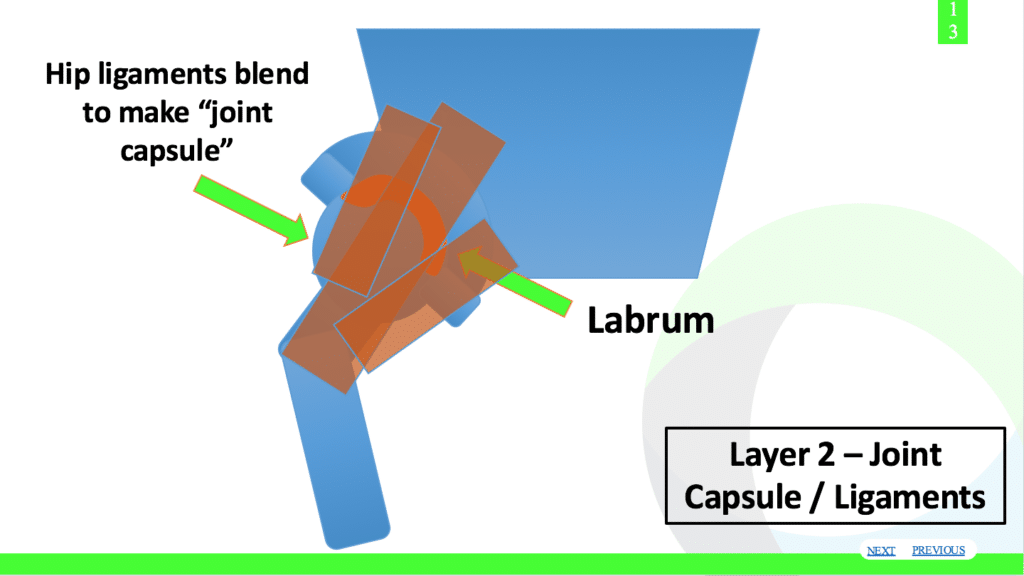
“Dynamic stabilizers” are muscular based structures like the hip flexors, hip rotators, and other glute/adductor muscles. These muscular dynamic components tie in heavily with neurological control and strength to maintain hip stability during motion.

Passive hip stabilizers like the iliofemoral ligament, ligamentous teres, labrum, and anterior hip capsule are very important structures in the front of the hip that assist instability during high force skills in gymnastics.
The iliofemoral ligament and extension of the anterior capsule have been noted in anatomical research to restrain external rotation and extension ranges of motion, like seen in extreme back leg split positions, and stabilize the hip against excessive movement out of the front of the joint. The labrum is a fibrocartilage ring of tissue that deepens the socket, aids in joint stability, and helps disperse forces. Research suggests it too can be stressed with excessive movement of the femoral head out of the hip socket.
The drills above are usually aiming to mobilize the hip flexors and quads. However, it sets the athlete’s heavily over arched back and pelvis position. When you look the anatomy of the hips flexors and one quad muscle (rectus femoris) this position makes it so that the soft tissue trying to be mobilized likely isn’t being tensioned. The drill itself along with more pushing from the athlete, a coach, or a weight only places stress on the lumbar spine and the passive hip stabilizers in the front of the hip noted above.
Over Extended Quad Stretch
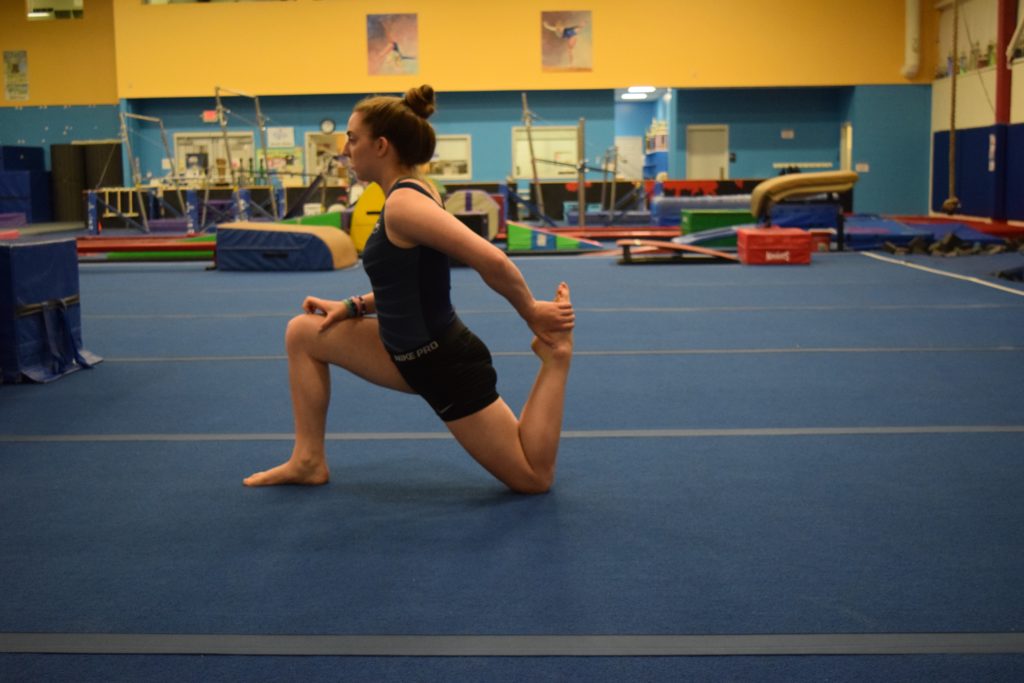
The “stretch pain” they feel is most likely being misinterpreted as muscular stretch pain. I can tell you for a fact you don’t want to put lots of stress on these structured as it can lead to some pretty serious injuries over time. I think this type of stretch actually causes more hip flexor “tightness” over time as the muscles in the front of the hip are protectively guarding in an eccentric fashion to keep the hip joint from subluxating anteriorly. The cycle then continues as “hip tightness”…more pushing…causing more guarding…”hip tightness”..and so on.

Actually, some of the tests I use commonly to diagnose gymnasts I treat with labral, capsular, or other more serious hip injuries mimic the types of stretches mentioned above.

Apprehension/Shearing in Split Pelvis Position
I can tell you for a fact, you do not want to be perpetuating this cycle of passive tissue irritation if there is a problem within the hip joint. It can lead to serious injuries, many months of recovery, and unfortunately sometimes surgical intervention to correct the damaged tissue. I personally also think this cycle leads to the common misunderstanding that gymnasts just get stiffer as they age. I think our lack of attention to anatomy, specificity, soft tissue care, and balanced strength programs creates this issue over time.
*** An Important Note *** – By this point, I’m sure readers are thinking I’m against all forms of passive stretching and working full splits. Let me clear the air now, I do not think that training splits and passive flexibility are “bad for gymnasts” and will automatically cause injuries. On the contrary, I think when properly approached with the correct rationale it is appropriate, and an important part of gymnastics success. The methods that are used, and the knoweldge/rationale behind how to go about getting full splits, however, is what I get worried about. It’s crucial that the person designing and implementing flexibiltiy programs are knoweldgable about this type of information. Back to the main content.
Another important point is that many gymnasts in pictures/ videos seen online are clearly hyper mobile individuals who don’t have an issue with passive range of motion. I’d be willing to bet money on the fact that on xray they have morphological hip changes like hip dysplasia or femoroacetabular version that make passive flexibility easy. They also likely have connective tissue level differences that makes it possible for them to get into these positions, with naturally reduced static ligamentous and capsular capabilities. These naturally mobile gymnasts with reduced static stability depend on exceptional dynamic stability to keep their hips safe and to increase their gymnastics performance.
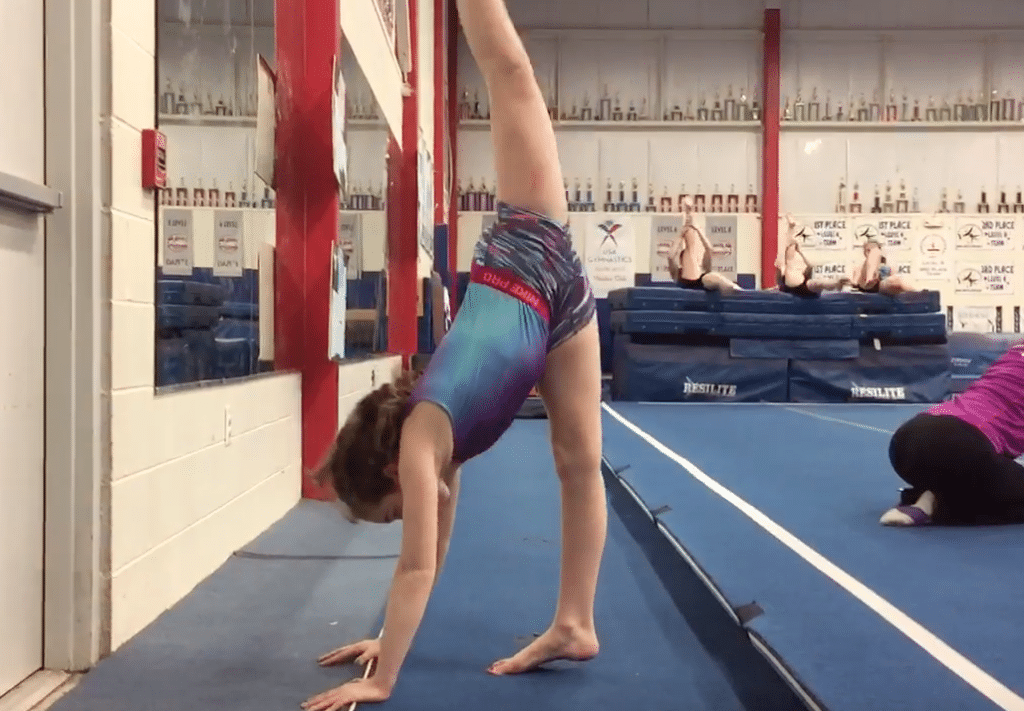
This is usually the case for most flexibility examples in videos or presentations, where gymnasts who have huge flexibility ranges naturally are chose to demonstrate the drills. I will tell you honestly not all gymnasts will have the same hip anatomy. The same drill that is easy for one gymnast demonstrating the drill with underlying hip dysplasia or differences in morphological boney alignment will completely destroy another gymnast’s hips who don’t have that naturally. Many gymnasts will require different flexibility drills, and more than not will need consistency over intensity to see long-term changes that stick around. Simply forcing it with passive stretches is not the answer.
Understanding the anatomy can be a lot, but for their health it’s crucial to consider if you are the one creating the flexibility programs gymnasts will follow. If interested, I strongly urge people to read for more in-depth info on the hip. The thoughts above are based on the research articles and other resources you can find here,
- Kalisvaart MM, Safran MR. Microinstability of the hip—it does exist etiology, diagnosis and treatment. Journal of Hip Preservation Surgery 2015, Vol. 0, No. 0, pp. 1–13
- Draovitch P1, Edelstein J, Kelly BT. The layer concept: utilization in determining the pain generators, pathology and how structure determines treatment. Curr Rev Musculoskelet Med. 2012 Mar;5(1):1-8. doi: 10.1007/s12178-011-9105-8.
- Weber AE, Bedi A, Tibor LM, Zaltz I, Larson CM. The Hyperflexible Hip: Managing Hip Pain in the Dancer and Gymnast. Sports Health. 2015 Jul;7(4):346-58
- Shu B., Safran MR. Hip Instability: Anatomic and Clinical Considerations of Traumatic and Atraumatic Instability. Clin Sports Med 30 (2011) 349–367
- Huang R, Diaz C, Parvizi J. Acetabular Labral Tears: Focused Review of Anatomy, Diagnosis, and Current Management. Phys Sportsmed. 2012 May;40(2):87-93. doi: 10.3810/psm.2012.05.1968.
- Meyers CA., et al. Role of the Acetabular Labrum and the Iliofemoral Ligament in Hip Stability: An In Vitro Biplane Fluoroscopy Study. Am J Sports Med 2011 39: 85S
What To Do Instead?
For naturally mobile gymnasts I work with who clearly show large passive limits, I have them steer away from passive flexibility work and instead develop strength/control in the large ranges they have. Remember passive only flexibility does nothing to change motor control needed to improve leaps, jumps, and so on.
Even for those that lack the passive mobility from soft tissue restrictions I go with other techniques to influence the soft tissue and create change, then immediately follow it up with similar drills to build control in the new range. There are hundreds of great control and ‘active flex’ drills I have seen going around that can be used after some less aggressive warm up and proper stretching techniques.
During workouts, I actually split our gymnasts into different groups for those that need more mobility work, and those that need more strength/control work. This alone I think helps push of injuries and elevate performance substantially. Foam rollers or other tools can be used for some light soft tissue work, then some adjustments to common stretches can be used to better help target the correct structures.
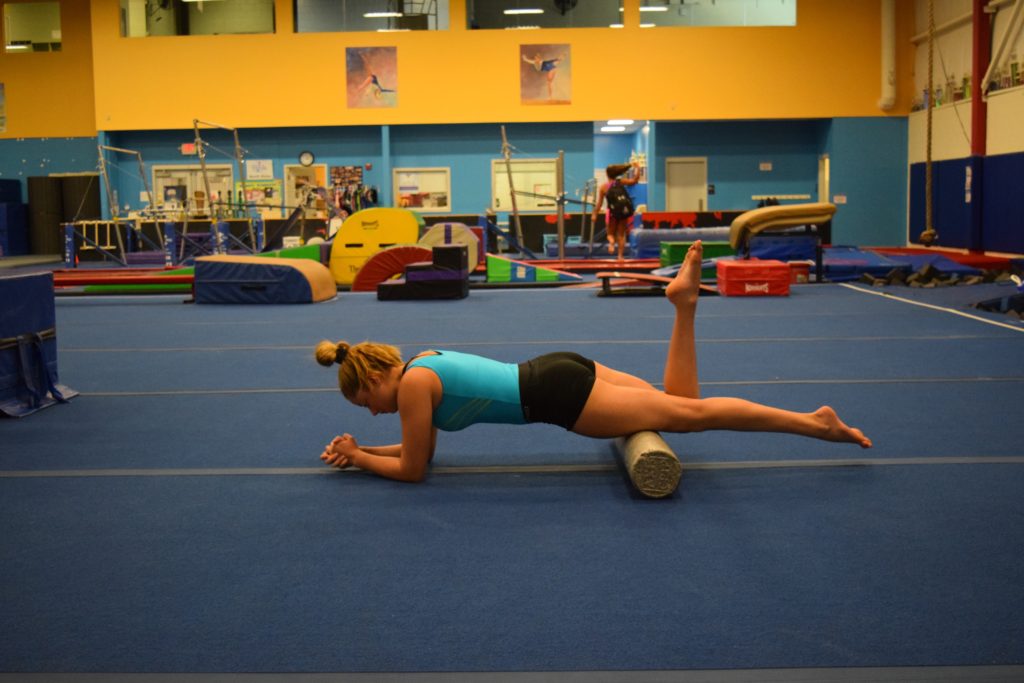
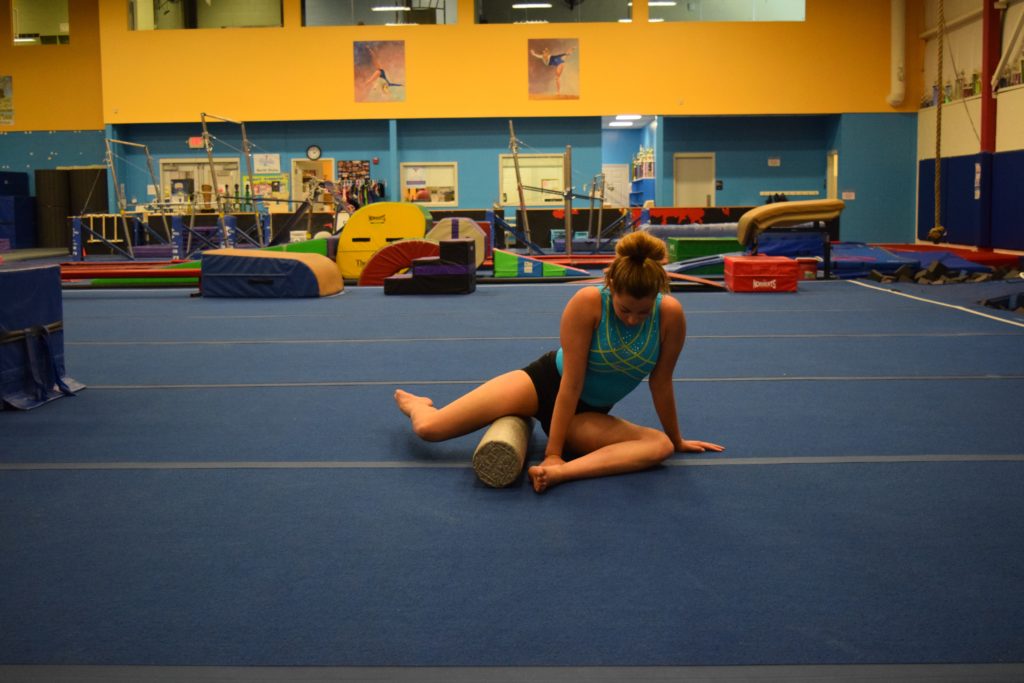
Then from this mobility work, the athlete can then learn hip control and build strength in gymnastics specific movements. More specifically for the back leg, try this drill instead.
To develop side splits, front splits, and other leaping/jumping/inbar angles try these
If a gymnast is having trouble “bridging the gap” between their passive and active flexibility ranges, give them some assistance to start to help develop motor control then slowly wean off of it.
I’ve also changed quite a bit to put these all together in “Performance Complexes” rather than just doing a few drills here and there. Here’s an example from a post I wrote earlier this year.
Then from here you can go to all your favorite active leap drills. I personally like tumble trak and panel mat drills following our motor control kicking work.
The Importance Of Periodizes Strength and Conditioning
Another very important piece I think people miss out on is the importance of structured, planned, periodized strength programs. I have a huge pet peeve for coaches who get upset with gymnasts for not being flexibility, but in reality are creating non balanced strength programs that create limited shoulder or hip mobility in the first place. Understanding balance in strength programs and what areas of the body are worked with certain exercises is crucial.
In a performance viewpoint, we have to create more single leg power off the floor to have more time in the air for leaps or jumps that require these large split leap angles. The same increase in strength/power can be used in the air to recruit more motor units and ideally be faster with the kick. This is done through developing strength and transferring it to rate of force production during different cycles. Here are some examples
In conclusion I hope not to leave anyone bitter, and instead gave some alternative approaches to use. I can tell you first hand, the best gymnasts I have worked with who are still healthy competing at a high level without hip injuries don’t go crazy with passive flexibility. They instead focus on quality of their positions, and work with active flex drills and strength to get better leaps.
It’s not that passive stretching, properly trainnig some over flexibility that is needed for certain skills, or every traditional flexibility drill in gymnastics is going too automatically cause an injury. It’s more the overpressure and passive only approach I feel we need to abandon due to the possible hip injuries it can cause. If after hearing my point of view and reading the resources listed you still are either upset or disagree, send me a professional email and I would be happy to talk more on the topic.
– Dave Tilley DPT, SCS

